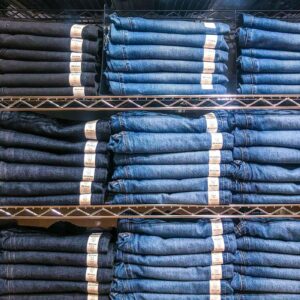
The modeling industry has played a key role in shaping societal beauty standards. It has also been a driving force behind body positivity and self-love movements.
While the industry has made strides toward inclusivity, its Eurocentric standard still tends to exclude women and girls from a variety of backgrounds. This is especially true for those in minority groups.
The 1990s
The 1990s were a time of change in fashion. It was the decade that brought casual chic into mainstream culture and gave women a chance to dress more freely and be less constrained by traditional fashion norms.
The ’90s was also a time of re-examining the ideal body shape. Many people at the time believed that the perfect feminine body should be an hourglass shape with a flat stomach and wide hips. The ’90s also saw the rise of plastic surgery and dieting.
While these trends helped to create a new standard of beauty, they also imposed strict guidelines for how women should look. For example, the makeup and hair trends for this decade dictated that women should have flawless skin, defined eyebrows, narrow noses, sucked-in cheeks, and full lips.
Moreover, ’90s models had to look thin and waif-like. Supermodel Kate Moss was the face of this trend, and she became an icon for the times.
Another trend that came from the ’90s was a return to bright colors, such as plum, black, and navy. These shades replaced the dark tones that had been associated with the grunge movement.
In terms of clothes, ’90s fashion featured a lot of plaid and patterned fabrics, including velvet. Flannel shirts also became popular, along with wool sweaters and corduroy jackets.
These trends were largely seen on the runways of designer labels, such as Gucci and Versace. They were also popular among celebrities, like Cher and Madonna.
Other important changes in the ’90s included a return to minimalism. In contrast to the flashy and elaborate styles of the 1980s, ’90s fashion was more conservative and emphasized practicality.
It was also the decade that brought back go-go boots, which had been popular in the ’80s among the preppy and hip-hop subcultures.
In addition, women started to wear miniskirts and plastic chokers. Other fashion trends from the ’90s included glamour wear, such as dresses and high-waisted pants. T-shirts, jeans, hoodies, and trainers were also popular. These fashions were primarily worn by young adults.
The 2000s
The beauty standards that have shaped society and the fashion industry have shifted over time. Some of these standards are now more diverse and inclusive than they used to be. These include the body type of a model, the makeup and hair styles that they wear, and their skin color.
In the early 2000s, the beauty standard was defined by a slim and toned figure. The media was saturated with skinny models who were often photographed wearing t-shirts and skirts that were too short to fit their bodies.
These images were meant to represent the ideal female, but they didn’t reflect what most women actually look like. Those who lacked the ideal physique often turned to plastic surgery to make up for their lack of shape.
Some of the earliest fashion trends that emerged in the 2000s included crop tops, psychedelic prints and patterns, furry garments, and embellished dresses. The decade also emphasized bronzed skin, and many ladies spent ample amounts of time in the tanning bed.
For the first time, hair styles began to change. Braids, spikes, knots, butterfly clips, and chunky highlights became popular. Some women went even further, coloring their hair in crazy colors or getting multiple tattoos.
Afros and long, straight hair were also popular, as were textured shags and bobs. These styles were inspired by rock and roll stars such as Stevie Nicks, Cher, Farrah Fawcett, and Pam Grier.
This period also saw a rise in two-toned hair styles, where the hues were blended. This trend was particularly popular among blondes, who often preferred the softer hues over brunette ones.
Another reoccurring theme was the use of spray tan and frosted lipstick. These products are designed to give the illusion of being tan, but they can easily make you look too dark for your own good.
Other fashion trends that dominated the 2000s included long, strong nails and colorful nail polish. However, a little bit of sunless tanner can go a long way in avoiding looking like you’ve just come from the tanning salon.
These changes in the way the fashion world looks at beauty are part of a larger shift in how people view bodies and faces. As more people start to see the difference between different body types, they begin to accept them for what they are. They also recognize the natural beauty in different facial features, such as a full face or a small one.
The 2010s
Models are one of the most coveted professions in fashion and there are some stipulations that must be met to become a part of the industry. These standards include body measurements, a certain level of fitness, and appearance.
While these standards have been around for a long time, they have changed with the advancement of feminism and social media. This change has led to a shift in the way we see beauty standards and how models are treated in the industry.
In the 2010s, we saw a new focus on natural beauty and the return of curves as idealized body standards. This era of body positivity was an important time for the industry, as it gave us a platform to promote black beauty and curly hair. Moreover, we saw inclusive brands and trans* and gender non-conforming models gain a lot of popularity in the industry.
Despite these positive changes, however, there are still a few areas where the industry still needs to improve. This includes the representation of models of all shapes and sizes, especially plus-size models.
Another area of improvement is the inclusion of women of color in the modeling industry. In the past, models of color were not often featured in fashion shows or campaigns, but this has changed with a push for more inclusivity.
The fashion industry has also started to embrace plus-size models and body shapes, such as Ashley Graham, a model who was the first size 14 to appear in an ad campaign. As a leader of the body positivity movement, she has been on the cover of many top-rated fashion magazines and her work has been recognized by several major publications.
While the standards for beauty are changing, they continue to disproportionately harm marginalized groups. This is because of the fact that beauty has always been used as a means to gain capital in society. Whether it’s in the fashion industry or Hollywood, it’s important to remember that beauty isn’t just about looks; it’s also about what you do with your body and what kind of person you are.
The Future
The beauty standards that models face are constantly changing. Some changes are due to the popularity of body positivity movements, and others are related to social media influence.
In the past, the beauty standards that were set for modeling were quite strict. They were focused on the idea that a woman should be tall and thin with perfect skin, hair, and facial features.
But as more people have become aware of the negative effects that these standards have on their mental and physical health, there has been a shift to promote more realistic and attainable body ideals. This has led to a shift in the way that models are chosen and promoted by fashion brands.
One of the most important changes in the future of beauty is that society will be more open to different types of beauty. This will allow women to be more confident in their appearance and not worry about what other people think of them.
Another change in the beauty industry is that models are starting to talk more about their personalities rather than just their bodies. This has a huge impact on their followers because they have more to offer than just their body shapes and facial features.
This is especially true with the models who have special needs, like Marian Avila, who was born with down syndrome. She managed to become a model and is now featured in many shows and campaigns.
The other example of changing the beauty standards is that there are more models of color who are featured in fashion shows and campaigns. This is because more people are aware of the importance of diversity and are beginning to appreciate the different body shapes, ethnicities, and abilities that are represented in the modeling industry.
However, there is still a lot of work to be done in order to make the beauty standards that are being used by the fashion industry more realistic and inclusive. This is because the societal standards that are being used for modeling are extremely unrealistic and have a major impact on women’s self-esteem.




